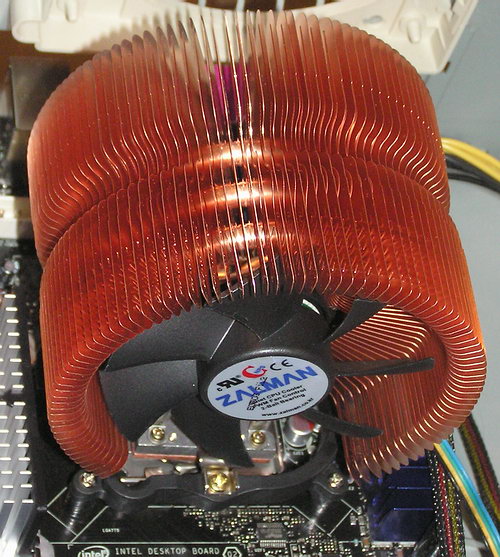- Joined
- Oct 5, 2001
- Messages
- 30,080
I don't overclock - have no real interest in it. As such, I've always used the stock cooler - and they've generally worked fine.
Over the last week I've been building a new PC, and again just used the stock cooler. Once up and running, I checked temperatures, and they seemed a bit hot: 46°C on low load, and peaking at > 90 on full load (ambient 25°C). So I took the cooler off, carefully cleaned-up the old thermal paste, put some new paste on and reset everything. Idle temperatures hardly changed, but got some benefit for load temperatures, dropping them to a max of 86°C.
(ambient 25°C). So I took the cooler off, carefully cleaned-up the old thermal paste, put some new paste on and reset everything. Idle temperatures hardly changed, but got some benefit for load temperatures, dropping them to a max of 86°C.
To my mind this is too hot. Although its apparently below the thermal trip setting, I see that overclockers target a maximum of about 70 for an overclocked unit, which mine isn't.
So I figured I'd get a new cooler. There wasn't much on offer in my town, but I got a Tuniq one. Attached that, and get much improved performance. On low loads, CPU temps are around 32°C, and at full load (sustained for 10 minutes), it only rose to a maximum of 56°C.
Anyone else have similar problems with the stock coolers?
Over the last week I've been building a new PC, and again just used the stock cooler. Once up and running, I checked temperatures, and they seemed a bit hot: 46°C on low load, and peaking at > 90 on full load
 (ambient 25°C). So I took the cooler off, carefully cleaned-up the old thermal paste, put some new paste on and reset everything. Idle temperatures hardly changed, but got some benefit for load temperatures, dropping them to a max of 86°C.
(ambient 25°C). So I took the cooler off, carefully cleaned-up the old thermal paste, put some new paste on and reset everything. Idle temperatures hardly changed, but got some benefit for load temperatures, dropping them to a max of 86°C.To my mind this is too hot. Although its apparently below the thermal trip setting, I see that overclockers target a maximum of about 70 for an overclocked unit, which mine isn't.
So I figured I'd get a new cooler. There wasn't much on offer in my town, but I got a Tuniq one. Attached that, and get much improved performance. On low loads, CPU temps are around 32°C, and at full load (sustained for 10 minutes), it only rose to a maximum of 56°C.
Anyone else have similar problems with the stock coolers?



 The only thing I don't like is how bulky it is inside the box.
The only thing I don't like is how bulky it is inside the box.